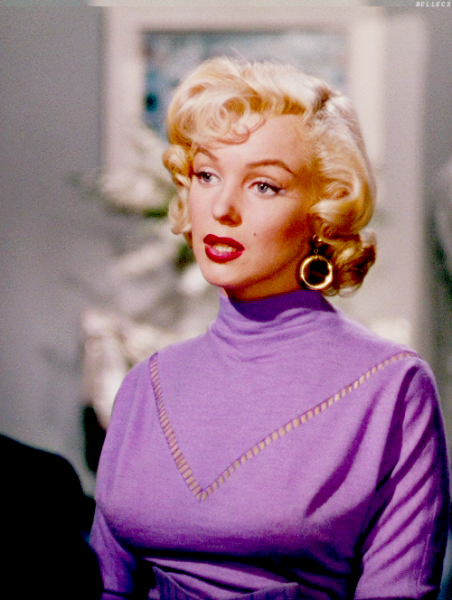
In an article for The Australian, Philippa Hawker charts the history of blondes in cinema -arguing that Marilyn continues to leave her mark on the evocation of blondeness.
“In cinema — not to mention fairytale, myth, art, literature, politics and the realm of popular culture in general — the image of the blonde or the fair-haired woman has carried a strong symbolic charge. It can be identified with innocence and purity but also with artifice and duplicity. It can suggest bounty, dazzle and allure, the implication that all that glisters is not necessarily gold. It can convey a heightened sense of spectacle. It is almost always associated with a notion of the feminine. The figure of the blonde is one of Hollywood’s most potent emblems and exports, and it has had an influence on other movie cultures over the years.
In cinema, the figure of the blonde often appears alongside the contrasting figure of the brunette; Gentlemen Prefer Blondes (1953), starring Marilyn Monroe and Jane Russell, is probably the most engaging example…
And, of course, there is Monroe, defining Hollywood blondeness, and to some degree transcending it by sheer effort of will. Her body of studio work is surprisingly confined: only once, in Clash by Night (1952), in which she portrays a cannery worker, did she play a character with an ordinary job. In her major roles she was always a variation on a gold-digger or a stereotypical ‘dumb blonde’ — yet she managed to subvert the stereotyping or deepen its implications, no matter what the challenge was off-screen. In The Prince and the Showgirl (1957), on what was reportedly a chaotic and troubled set, she gives an effortlessly appealing performance in an unlikely period piece: it is her co-star, Laurence Olivier (also her director), who appears awkward and uncomfortable.
Monroe, one way or another, continues to leave her mark on the evocation of blondeness. In the 80s, Madonna did her best to own it, restaging Monroe’s ‘Diamonds are a Girl’s Best Friend’ number, rifling through the Hollywood cultural dress-up box for a variety of shades and identities. Her video clip for ‘Vogue’, directed by David Fincher, explicitly raids both classic Hollywood portraiture and the vogueing phenomenon of the gay club.”